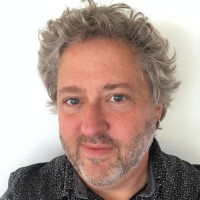Intel Demonstrates DirectX 12 at SIGGRAPH
This week during SIGGRAPH, Intel demonstrated the upcoming DirectX 12 API using a Surface Pro 3 that was thermally controlled to mimic 10 to 15 minutes of gameplay. The demo provided two modes – performance and power- to show how the new API handles each. The demo could also instantly switch from DirectX 12 to DirectX 11 to see the performance and power gains with the former.
The DirectX demo consisted of a space scene filled with 50,000 “dynamic and unique” asteroids. In performance mode, DirectX 11 rendered the scene at 19 frames per second, and the power usage was equally distributed between the CPU and GPU. However, when switched over to DirectX 12, the framerate jumped from 19 fps to 33 fps, a 70 percent increase.
According to Intel’s Andrew Lauritzen, the performance increased because DirectX is designed for “low overhead, multi-threaded” rendering. Because the CPU power has been reduced, that leftover power can be used by the GPU.
For the second power-focused demo, Intel used the same scene, only the framerate was locked. At the bottom right of the screen, you can see that DirectX 11 requires nearly equal amounts of power; however, with DirectX 12 turned on, the overall power draw is reduced, with the CPU sipping on power and the GPU getting a bigger fill. Thus, when you compare the two APIs together, the tablet will stay cooler and have a longer battery life when the application uses DirectX 12.
“The main takeaway is that power and performance are inseparably linked. Conventional notions of 'CPU vs. GPU bound' are misleading on modern devices like the Surface Pro 3," Lauritzen said. "An increase in CPU power efficiency can be used for more performance even if an application is not 'CPU bound'".
Intel plans to release the demo when Microsoft finally launches DirectX 12. Additional images can be found on Lauritzen’s blog.
Follow Kevin Parrish @exfileme. Follow us @tomshardware, on Facebook and on Google+.
Get Tom's Hardware's best news and in-depth reviews, straight to your inbox.

Kevin Parrish has over a decade of experience as a writer, editor, and product tester. His work focused on computer hardware, networking equipment, smartphones, tablets, gaming consoles, and other internet-connected devices. His work has appeared in Tom's Hardware, Tom's Guide, Maximum PC, Digital Trends, Android Authority, How-To Geek, Lifewire, and others.
-
husker Quote:Reply
"...with DirectX 12 turned on, the overall power draw is reduced..."
I do not get this from the graph at all. It looks to me like the overall power draw is the same between DX11 and DX12, but DX12 just directs more power to the GPU and less to the CPU. -
Avus For Intel, any game/tech demo that can run @ 30fps using Intel Graphics is consider "spectacular".Reply
-
ingtar33 well... since intel is having a hand in dx12, i suposed we can assume there is a "if intel; else" series of switched built into it.Reply -
red77star Intel is not a benchmark for GPU performance. They need to test Nvidia and AMD Gpu with DX12.Reply -
SteelCity1981 Replywell... since intel is having a hand in dx12, i suposed we can assume there is a "if intel; else" series of switched built into it.
Supposedly the xbox one has something similar that will give the xbox one directX 12 with a firmware update to the system. -
godfather666 Reply13963750 said:Quote:
"...with DirectX 12 turned on, the overall power draw is reduced..."
I do not get this from the graph at all. It looks to me like the overall power draw is the same between DX11 and DX12, but DX12 just directs more power to the GPU and less to the CPU.
I think that's because, according to the text, power is only reduced when the frame rate is capped. The graph doesn't show a capped frame rate.
edit: actually, the first chart here http://www.pcworld.com/article/2465211/intel-microsoft-promise-directx-12-could-halve-pc-graphics-power-draw.html
confirms what I said. It shows a 50% reduction in power. I'm sure that's a bit of a best case scenario, but that's still mighty impressive, I think. -
Treynolds416 What godfather said. I think the anandtech article explains it the best, with all 3 pictures http://www.anandtech.com/show/8388/intel-demonstrates-direct3d-12-performance-and-power-improvementsReply -
hannibal Also remember that Mantle is most useful with APU. If you have fast CPU and fast GPU the benefits from DX12 are also quite small!Reply
The DX12 is a good news to anyone who don't have separate graphic card to all else it gives much less. But as we have seen from Mantle, even high end systems get 3-6% more speed and it is not bad at all!
So using Intel build in GPU in these test is good choice because it is the system that benefits most from these close to metal programming.
Not sure if we could see some really graphically demanding games, then closer to metal programming could also be more useful in high end system. But if games are not made for Xbox360 and PS3 and maybe even to Xbox one and PS4 the games are not going to be very demanding in the near future.
